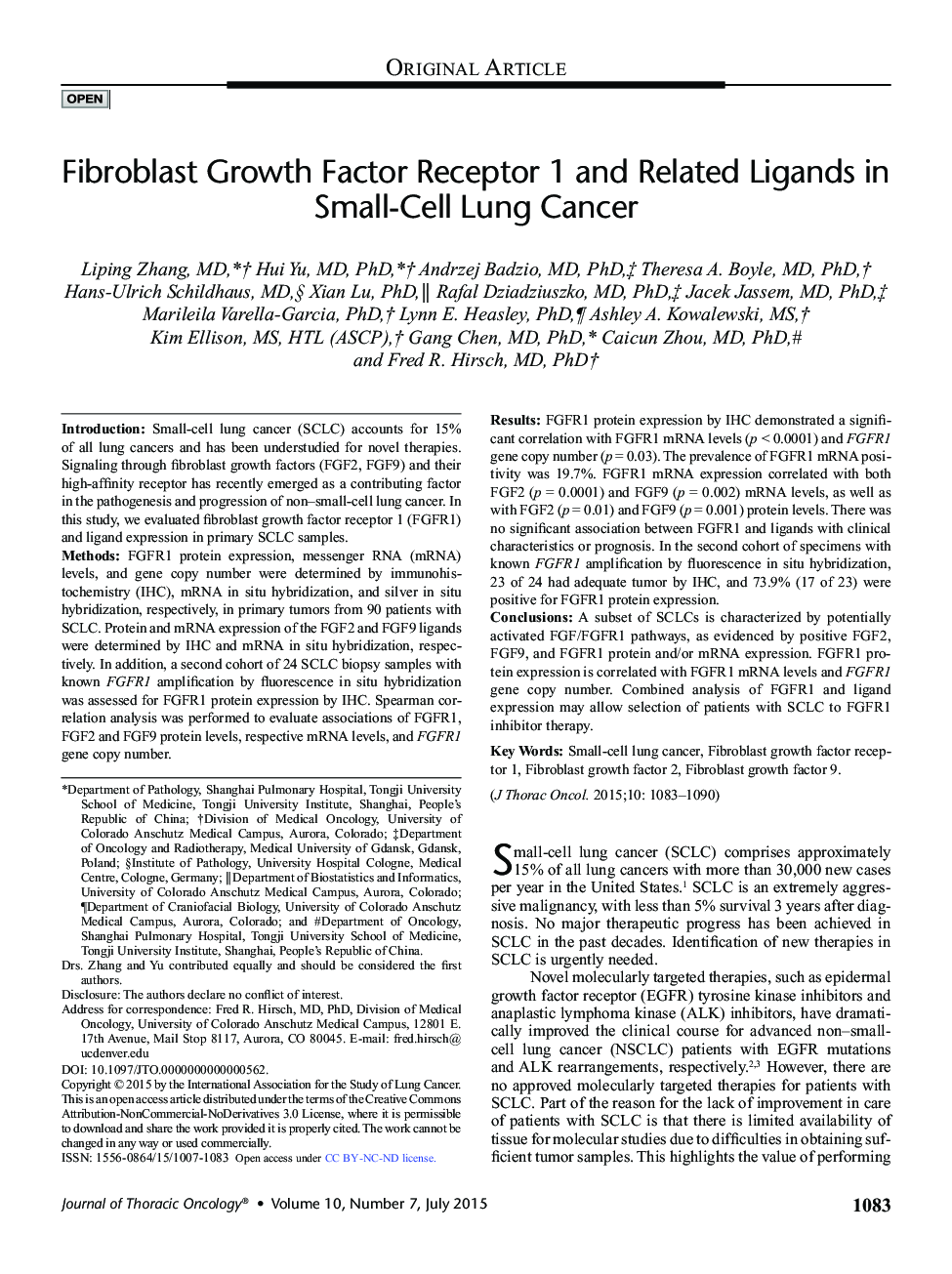| کد مقاله | کد نشریه | سال انتشار | مقاله انگلیسی | نسخه تمام متن |
|---|---|---|---|---|
| 6192845 | 1258683 | 2015 | 8 صفحه PDF | دانلود رایگان |
Introduction:Small-cell lung cancer (SCLC) accounts for 15% of all lung cancers and has been understudied for novel therapies. Signaling through fibroblast growth factors (FGF2, FGF9) and their high-affinity receptor has recently emerged as a contributing factor in the pathogenesis and progression of non-small-cell lung cancer. In this study, we evaluated fibroblast growth factor receptor 1 (FGFR1) and ligand expression in primary SCLC samples.Methods:FGFR1 protein expression, messenger RNA (mRNA) levels, and gene copy number were determined by immunohistochemistry (IHC), mRNA in situ hybridization, and silver in situ hybridization, respectively, in primary tumors from 90 patients with SCLC. Protein and mRNA expression of the FGF2 and FGF9 ligands were determined by IHC and mRNA in situ hybridization, respectively. In addition, a second cohort of 24 SCLC biopsy samples with known FGFR1 amplification by fluorescence in situ hybridization was assessed for FGFR1 protein expression by IHC. Spearman correlation analysis was performed to evaluate associations of FGFR1, FGF2 and FGF9 protein levels, respective mRNA levels, and FGFR1 gene copy number.Results:FGFR1 protein expression by IHC demonstrated a significant correlation with FGFR1 mRNA levels (p < 0.0001) and FGFR1 gene copy number (p = 0.03). The prevalence of FGFR1 mRNA positivity was 19.7%. FGFR1 mRNA expression correlated with both FGF2 (p = 0.0001) and FGF9 (p = 0.002) mRNA levels, as well as with FGF2 (p = 0.01) and FGF9 (p = 0.001) protein levels. There was no significant association between FGFR1 and ligands with clinical characteristics or prognosis. In the second cohort of specimens with known FGFR1 amplification by fluorescence in situ hybridization, 23 of 24 had adequate tumor by IHC, and 73.9% (17 of 23) were positive for FGFR1 protein expression.Conclusions:A subset of SCLCs is characterized by potentially activated FGF/FGFR1 pathways, as evidenced by positive FGF2, FGF9, and FGFR1 protein and/or mRNA expression. FGFR1 protein expression is correlated with FGFR1 mRNA levels and FGFR1 gene copy number. Combined analysis of FGFR1 and ligand expression may allow selection of patients with SCLC to FGFR1 inhibitor therapy.
Journal: Journal of Thoracic Oncology - Volume 10, Issue 7, July 2015, Pages 1083-1090
